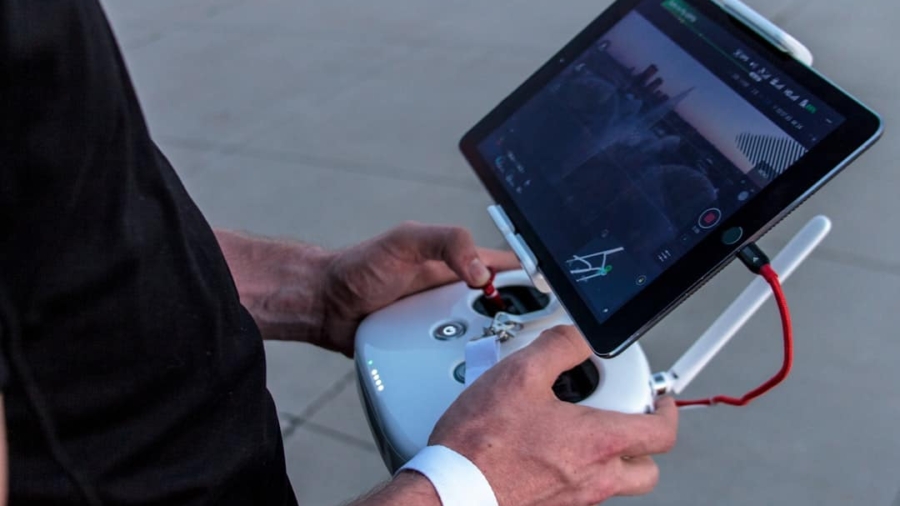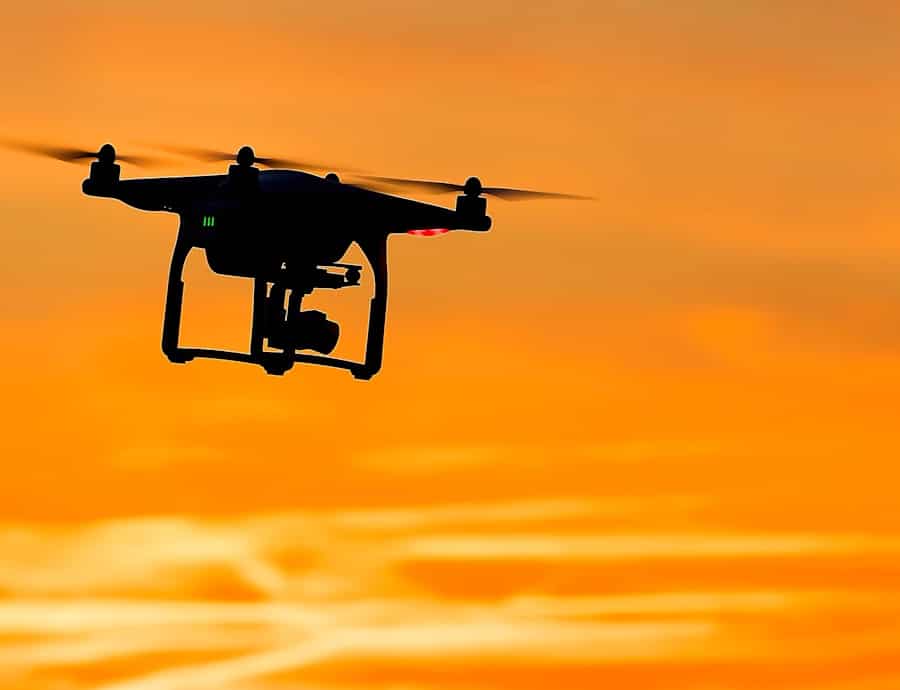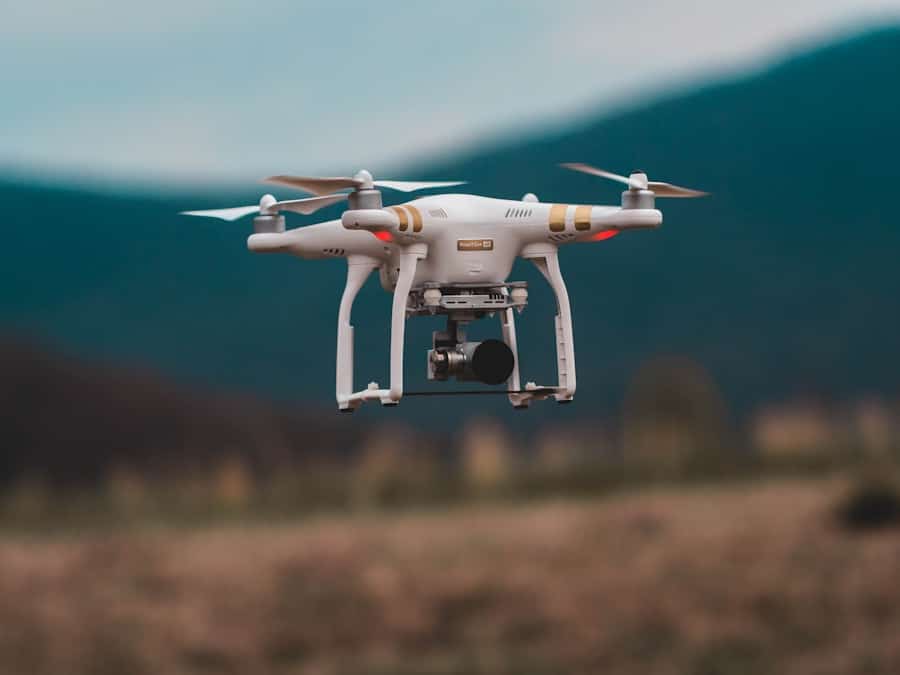The advent of artificial intelligence (AI) has revolutionized numerous industries, and the field of drone technology is no exception. AI-integrated drones represent a significant leap forward in the capabilities of unmanned aerial vehicles (UAVs), enabling them to perform complex tasks with a level of autonomy and efficiency previously unattainable. These drones are equipped with advanced algorithms that allow them to process vast amounts of data in real-time, making them invaluable tools for various applications, particularly in surveillance.
The integration of AI into drone technology enhances their ability to analyze environments, recognize patterns, and make decisions based on the information they gather, thus transforming the landscape of aerial monitoring and reconnaissance. As the demand for effective surveillance solutions continues to grow, AI-integrated drones are emerging as a critical asset for both public and private sectors. Their ability to cover large areas quickly and efficiently makes them ideal for monitoring activities in urban environments, natural disaster zones, and remote locations.
The combination of AI and drone technology not only improves operational efficiency but also enhances the accuracy and reliability of surveillance data. This article delves into the advantages, applications, challenges, ethical considerations, future developments, and regulatory implications surrounding AI-integrated drones in the realm of surveillance.
Key Takeaways
- AI-integrated drones combine the power of artificial intelligence with the versatility of drones to revolutionize surveillance and monitoring.
- Advantages of AI-integrated drones in surveillance include real-time data analysis, autonomous operation, and enhanced situational awareness.
- Applications of AI-integrated drones in surveillance range from law enforcement and border security to disaster response and wildlife conservation.
- Challenges and limitations of AI-integrated drones in surveillance include technical issues, privacy concerns, and potential misuse of data.
- Ethical and privacy considerations with AI-integrated drones highlight the need for responsible use, data protection, and public transparency.
Advantages of AI-Integrated Drones in Surveillance
Real-Time Data Analysis and Object Detection
Traditional drones rely on human operators to interpret the data they collect, which can lead to delays and potential errors in judgment.
Enhanced Surveillance and Response Capabilities
This capability allows for quicker responses to potential threats or incidents, making them particularly useful in security and law enforcement applications. For instance, during large public events, AI-integrated drones can monitor crowds for unusual behavior or detect potential security risks, providing authorities with timely information to act upon.
Adaptability and Continuous Improvement
Machine learning techniques allow these drones to adapt to changing environments and refine their surveillance strategies based on historical data. This adaptability is crucial in dynamic situations where conditions may vary rapidly, such as during natural disasters or civil unrest. By continuously learning from past missions, AI-integrated drones can optimize their flight paths, enhance target recognition capabilities, and reduce false positives in surveillance operations.
Applications of AI-Integrated Drones in Surveillance
AI-integrated drones have found a multitude of applications across various sectors, significantly enhancing surveillance capabilities. In law enforcement, these drones are employed for monitoring public spaces, tracking suspects, and gathering evidence during investigations. For example, police departments in several cities have begun utilizing AI-equipped drones to patrol neighborhoods and respond to incidents more efficiently.
By analyzing real-time footage and identifying suspicious activities, these drones can assist officers on the ground by providing critical situational awareness. In addition to law enforcement, AI-integrated drones are increasingly used in environmental monitoring and disaster response. They can survey vast areas affected by natural disasters such as wildfires or floods, providing emergency responders with crucial information about affected regions.
For instance, after a hurricane strikes, drones equipped with AI can quickly assess damage levels by analyzing aerial imagery and identifying structural failures or hazardous conditions. This information is vital for coordinating rescue operations and allocating resources effectively. Furthermore, the agricultural sector has also embraced AI-integrated drones for surveillance purposes.
Farmers utilize these drones to monitor crop health, assess irrigation needs, and detect pest infestations. By employing advanced imaging techniques combined with AI analysis, these drones can provide farmers with actionable insights that lead to improved yields and reduced costs. The ability to monitor large tracts of land efficiently allows for timely interventions that can significantly impact agricultural productivity.
Challenges and Limitations of AI-Integrated Drones in Surveillance
Despite their numerous advantages, AI-integrated drones face several challenges and limitations that must be addressed for their effective deployment in surveillance operations. One significant challenge is the issue of data management. The vast amounts of data generated by these drones can overwhelm existing storage and processing systems.
Organizations must invest in robust data infrastructure capable of handling high volumes of information while ensuring that it remains accessible for analysis. Additionally, the need for real-time processing requires advanced computing capabilities that may not be readily available in all operational contexts. Another limitation is the potential for technical malfunctions or failures during critical missions.
While AI algorithms can enhance decision-making processes, they are not infallible. Drones may encounter unexpected obstacles or environmental conditions that could lead to operational failures. For instance, adverse weather conditions such as heavy rain or strong winds can affect flight stability and data collection accuracy.
Ensuring reliable performance under varying conditions is essential for maintaining trust in AI-integrated drone technology. Moreover, there are concerns regarding the reliability of AI algorithms themselves. Biases inherent in training data can lead to inaccurate assessments or misidentifications during surveillance operations.
For example, if an AI system is trained predominantly on specific demographic groups or environments, it may struggle to accurately identify individuals or objects outside those parameters. This limitation raises questions about the fairness and effectiveness of AI-driven surveillance systems.
Ethical and Privacy Considerations with AI-Integrated Drones
The deployment of AI-integrated drones in surveillance raises significant ethical and privacy concerns that warrant careful consideration. One primary issue is the potential for invasive monitoring practices that infringe upon individuals’ rights to privacy. As these drones become more prevalent in urban areas, there is a growing fear that constant surveillance could lead to a society where individuals are perpetually monitored without their consent.
This concern is particularly acute in contexts where drones are used by law enforcement agencies or government entities. Additionally, the use of facial recognition technology in conjunction with AI-integrated drones has sparked intense debate regarding its ethical implications. While this technology can enhance security measures by identifying potential threats, it also raises questions about civil liberties and the potential for misuse.
Instances of wrongful identification or profiling based on biased algorithms could lead to unjust consequences for innocent individuals. Striking a balance between security needs and protecting citizens’ rights is a complex challenge that requires thoughtful dialogue among stakeholders.
Citizens must be informed about how these technologies are being deployed and what data is being collected. Establishing clear guidelines and regulations governing the use of surveillance drones can help mitigate concerns about overreach and ensure accountability among operators. Engaging communities in discussions about surveillance practices can foster a sense of shared responsibility and promote ethical standards in drone operations.
Future Developments and Innovations in AI-Integrated Drones
The future of AI-integrated drones holds immense potential for further advancements that could reshape surveillance practices across various sectors. One promising area of development is the integration of advanced sensor technologies that enhance data collection capabilities. For instance, incorporating multispectral imaging sensors can provide detailed insights into environmental conditions or agricultural health that traditional cameras cannot capture.
This innovation could lead to more informed decision-making processes across industries. Moreover, advancements in communication technologies such as 5G networks will enable faster data transmission between drones and control centers. This increased bandwidth will facilitate real-time sharing of high-resolution imagery and analytics, allowing operators to respond more swiftly to emerging situations.
The combination of enhanced connectivity with AI-driven analytics will create a more responsive surveillance ecosystem capable of adapting to dynamic environments. Additionally, as machine learning algorithms continue to evolve, we can expect improvements in object recognition accuracy and predictive analytics capabilities within AI-integrated drones. These advancements will enable drones to not only identify objects but also anticipate potential threats based on behavioral patterns observed over time.
Such predictive capabilities could revolutionize security measures by allowing proactive interventions before incidents escalate.
Regulatory and Legal Implications of AI-Integrated Drones in Surveillance
The rapid proliferation of AI-integrated drones has prompted discussions around regulatory frameworks that govern their use in surveillance operations. Policymakers face the challenge of creating regulations that balance innovation with public safety and privacy concerns. Existing aviation regulations may need to be adapted or expanded to address the unique characteristics of drone technology and its applications in surveillance.
One critical aspect of regulation involves establishing guidelines for data collection and retention practices associated with drone surveillance. Clear policies must outline how long data can be stored, who has access to it, and under what circumstances it can be shared with third parties. Ensuring transparency in these processes is essential for maintaining public trust while allowing organizations to leverage drone technology effectively.
Furthermore, legal frameworks must address liability issues related to drone operations. In cases where an AI-integrated drone malfunctions or causes harm during a surveillance mission, determining accountability can be complex. Establishing clear legal standards regarding operator responsibilities and potential liabilities will be crucial as drone technology continues to evolve.
The Impact of AI-Integrated Drones on the Future of Surveillance
AI-integrated drones are poised to significantly impact the future landscape of surveillance across various sectors by enhancing operational efficiency and data analysis capabilities. Their ability to autonomously gather and process information allows for quicker responses to incidents while reducing reliance on human operators. However, as these technologies become more integrated into everyday life, addressing ethical considerations surrounding privacy rights will be paramount.
The ongoing development of regulatory frameworks will play a crucial role in shaping how AI-integrated drones are utilized for surveillance purposes while ensuring accountability and transparency among operators. As innovations continue to emerge within this field, striking a balance between leveraging technological advancements for security needs while safeguarding individual rights will be essential for fostering public trust in these transformative tools. In summary, the integration of artificial intelligence into drone technology represents a significant advancement with far-reaching implications for surveillance practices worldwide.
As we navigate this evolving landscape, it is imperative that stakeholders engage in meaningful dialogue about the ethical considerations involved while embracing the potential benefits that AI-integrated drones offer.
If you are interested in the latest technology trends, you may also want to check out this article on the best free software for 3D modeling in 2023. Just like AI-integrated drones are changing the future of surveillance, advancements in 3D modeling software are revolutionizing the way we create and design in various industries. Both articles showcase how technology is shaping the future and pushing boundaries in different fields.
FAQs
What are AI-integrated drones?
AI-integrated drones are unmanned aerial vehicles equipped with artificial intelligence technology that allows them to perform autonomous tasks such as surveillance, object recognition, and decision-making.
How are AI-integrated drones changing the future of surveillance?
AI-integrated drones are revolutionizing surveillance by providing real-time monitoring, efficient data collection, and advanced analytics capabilities. They can cover large areas, identify potential threats, and assist in emergency response situations.
What are the benefits of using AI-integrated drones for surveillance?
The benefits of using AI-integrated drones for surveillance include improved efficiency, cost-effectiveness, enhanced safety for personnel, and the ability to access hard-to-reach or hazardous areas. They also offer advanced capabilities such as facial recognition and tracking.
What are the potential concerns or challenges associated with AI-integrated drones for surveillance?
Some potential concerns include privacy issues, the potential for misuse or abuse of surveillance capabilities, and the need for regulations to ensure responsible and ethical use of AI-integrated drones for surveillance purposes.
How is AI technology integrated into drones for surveillance purposes?
AI technology is integrated into drones for surveillance purposes through the use of computer vision, machine learning algorithms, and neural networks. These technologies enable drones to process and analyze visual data in real-time, allowing them to make autonomous decisions and take appropriate actions.



